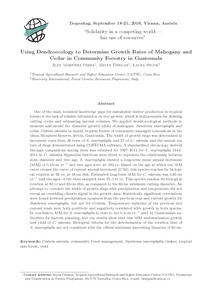Understanding conflict in the co-management of forests: the case of Bulungan Research Forest
The paper describes underlying causes of conflicts between local people in Bulungan Research Forest (BRF), Indonesia with coal-mining and logging companies. Results show that conflict between local people and mining companies was triggered by the fact that mining operation caused water and air pollution and soil degradation. Another cause for such a conflict was the compensatory facilities (e.g. clean water, electricity, compensation fee, etc.) provided by the companies to local people were often delayed or unsatisfactory.


